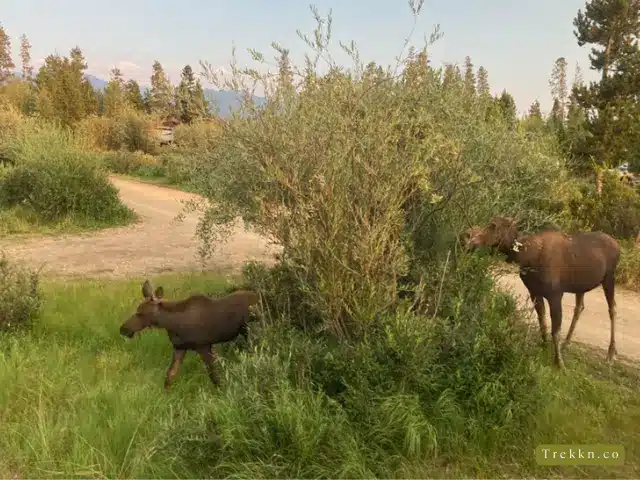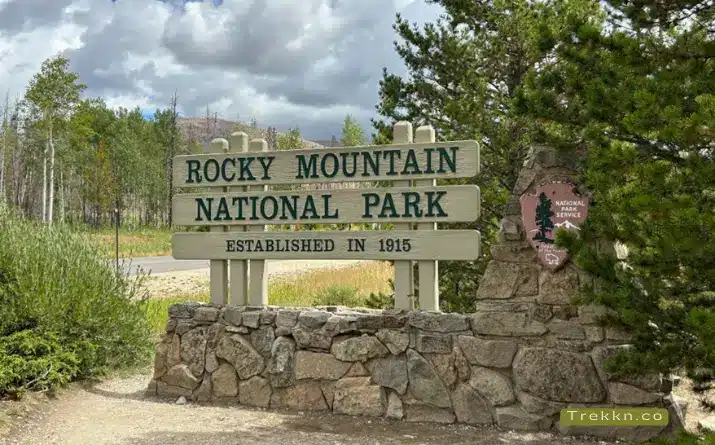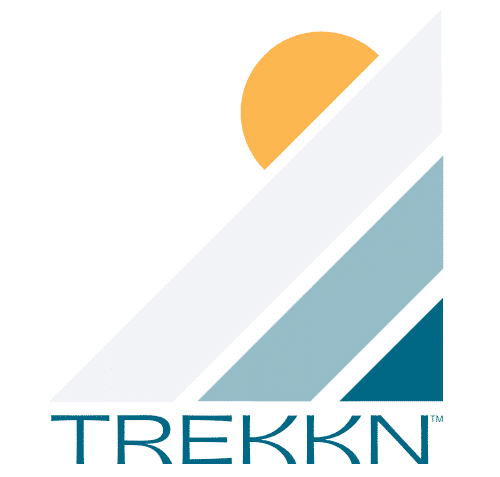A Traveler’s Guide to Rocky Mountain National Park
Rocky Mountain National Park consistently ranks in the top five most-visited national parks in the United States, and it’s easy to see why. Nestled in the heart of the Colorado Rockies, Rocky Mountain National Park (RMNP) offers visitors an exhilarating blend of natural beauty, rugged wilderness, and adventurous activities.
As a Colorado native, I also have a personal connection to the park—my family has visited almost every summer since I was born, so I’ve seen the park change over the years. (Most recently, thanks to the East Troublesome fire.)

While I may be biased, I think RMNP is the perfect playground for RVers, campers, and adventure travelers who love hiking, mountaineering, paddling, skiing, or just about anything else you could want to do outdoors.
This guide will help you make the most of your visit, whether you’re behind the wheel of your RV or lacing up your hiking boots.
What to Know About Rocky Mountain National Park
Rocky Mountain National Park has some serious street cred. It’s one of the highest national parks in the US, with over 60 peaks above 12,000 feet.
The Continental Divide also runs right through the park, and you can traverse it either on foot or by driving Trail Ridge Road, the highest paved through road in the national park system.

Pro Tips for Visitors
Here are some tips for visiting Rocky Mountain National Park, based on many firsthand visits.
Trail Ridge Road
This 48-mile drive will take you from Estes Park on the east side to Grand Lake on the west. Eleven miles of the drive are above treeline, giving you stunning views of the surrounding peaks.
Driving Trail Ridge is also a great way to see bighorn sheep, elk, and maybe even moose. At the top of Trail Ridge, stop at the Alpine Visitor Center (the highest in the country) and walk along the short Alpine Ridge Trail.
Keep an Eye on the Sky
Mountain weather changes quickly, and it’s easy to miss a storm cloud brewing behind a nearby peak until it’s too late. Check forecasts, start long hikes early, and always carry gear to keep you safe and dry in the event of a storm.
Stay Hydrated
RMNP is at high elevation no matter where you go, which can impact even the healthiest of adventurers. Running out of water can cause dizziness or nausea. Fill up your water bottle before heading out and drink lots of water during your time outdoors.
Give your body time to acclimate to the higher elevation before attempting any serious climbs. And, even if you know there are natural water sources available, be sure to pack your best water filter to avoid risk of dehydration.
Permits and Reservations
RMNP requires a reservation to enter the park during the high season (May 26-October 22 at the time of writing), so book your entry slot ahead of time. If the date you want sells out, check back the day before after 5 p.m. when more tickets are released.
If you can’t get a timed entry, arrive at the park early in the morning or late afternoon. You do not need a reservation to enter the park before 9 a.m. or after 2 p.m.
Note that different times apply for Bear Lake, which has a separate reservation system.
If you plan to fish, climb, or backpack, check the permitting rules and plan ahead to secure your spot.
Road Closures
Ridge Road is closed during winter, so if you’re going in the shoulder season, check ahead for updated road conditions.
Crowds
As I mentioned, RMNP is one of the most-visited national parks in the country, so be prepared for crowds. Parking gets tough, especially in some of the smaller lots. Arrive early or late in the day to score a spot.
If you’re exploring from Estes Park, you can also take a shuttle into the park. There is no public transportation from the Grand Lake side.
For Dog Lovers
Dogs are not allowed on any trails in the park, but there’s national forest on all sides where they can roam. Check AllTrails for options near you.

SUMMARY
East Side Highlights: Estes Park
The town of Estes Park is by far the most popular jumping-off point for visiting RMNP. From Estes Park, you can enjoy shuttle transportation to the park and a wide variety of hotels (including the Stanley Hotel of The Shining fame), Airbnbs, and campgrounds.
As such, Estes Park is pretty touristy and gets crowded in peak season. Don’t let that stop you from visiting! Estes Park has a lot to offer, including breweries, restaurants, and a very walkable main street.
Hiking Trails
Bear Lake
Bear Lake is probably the most popular trailhead in the park—so much so that it now has its own reservation system.
There’s something here for all skill levels, as a variety of trails leave from this point. The three-mile hike to Nymph, Dream, and Emerald Lakes is one of the most popular activities launching from this TH.
Alberta Falls
Alberta Falls is one of the park’s most popular waterfalls. It’s also a short and easy hike from the Glacier Gorge parking lot, not even two miles round-trip.
Longs Peak
If you’re up for a challenge, Longs Peak is a 14er (14,259 feet, to be precise) that attracts experienced adventurers seeking a thrill.
The 15-mile Keyhole Route to the summit is iconic but demanding, including class 3 scrambling and traverses with exposure. People have died trying to summit Longs Peak, so it’s not for the faint of heart.
The National Park Service specifically states that the Keyhole Route is not a hike. It’s a vertical climb up sheer rocks along a narrow ledge with loose rocks and steep cliffs. Do not attempt unless you are an experienced climber and understand the dangerous conditions.

Other Activities
Campgrounds
There are several private RV parks on this side, but you also have two options for RV camping inside the park: Aspenglen and Glacier Basin.
Note: Moraine Park Campground on the north side of Moraine Park is currently closed due to construction of the East Utility Project.
Aspenglen offers no amenities behind campsites and stays open year-round. Glacier Basin has a dump station and potable water and is open from May to mid-September.
None of the RV parks in Rocky Mountain National Park have hookups at your campsite. Arrive ready for dry camping.
West Side Highlights: Grand Lake
On the west side of the park—the side most impacted by the East Troublesome fire—is the small mountain town of Grand Lake. This side is quieter and less touristy than Estes Park, with a more authentic mountain feel.
You won’t find quite as many amenities on this side, so don’t look for shuttles or big hotels here. But what Grand Lake lacks in infrastructure, it makes up for in natural beauty.
Hiking Trails
Other Activities

Campgrounds
Timber Creek is the only campground on the park’s west side. Pine beetles decimated the trees here long before the fire—but on the plus side, you have unobstructed views of the mountains.
Timber Creek is open to both tent campers and RVs for dry camping, with potable water and a dump station onsite. Fishing enthusiasts will love its proximity to the Colorado River.
Final Thoughts on Rocky Mountain National Park
Rocky Mountain National Park is more than just a destination; it’s an experience. Whether you’re hiking up challenging trails, biking through rugged landscapes, fishing in serene waters, or camping under starry skies, RMNP offers an adventure for everyone.
Respect the natural environment and enjoy the unparalleled beauty of this Colorado gem.


Sarah Kuiken has been a full-time solo traveler for 4 years and counting, but she’s been a solo adventurer for decades. She owns her own copywriting business, Flourish Writing, which she operates from the road. Sarah loves to explore state and national parks with her two dogs, Orion and Piper—wherever they’re allowed, of course. When she’s not whipping up web copy for fellow entrepreneurs, she’s probably out hiking or paddle boarding with the dogs in tow. Learn more about her freelance writing business at FlourishWriting.com.







